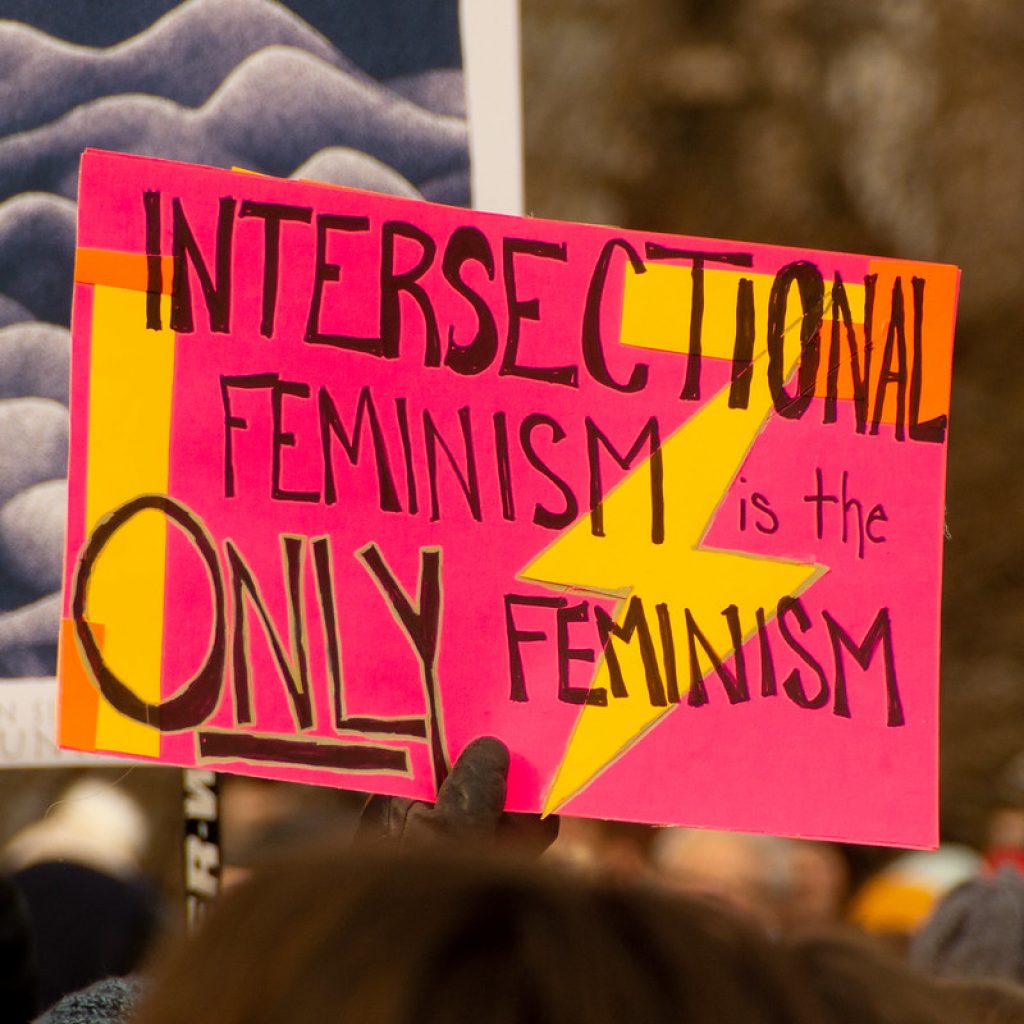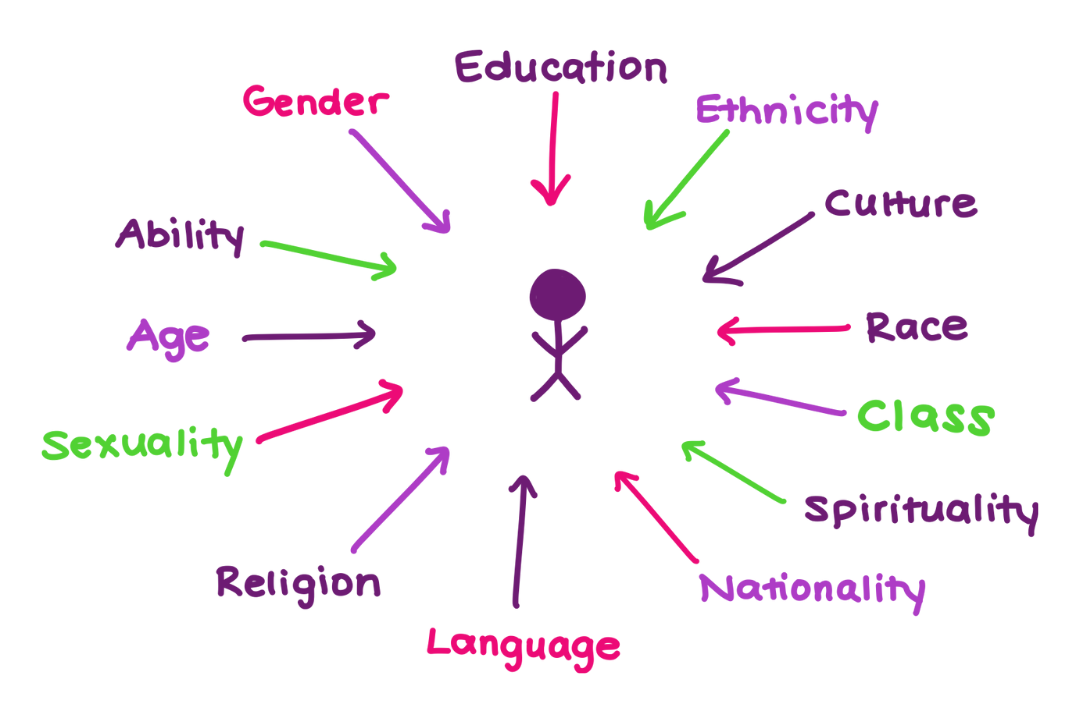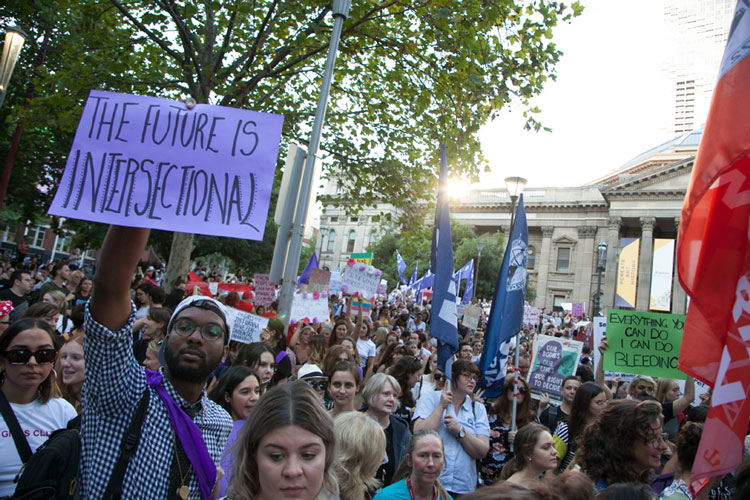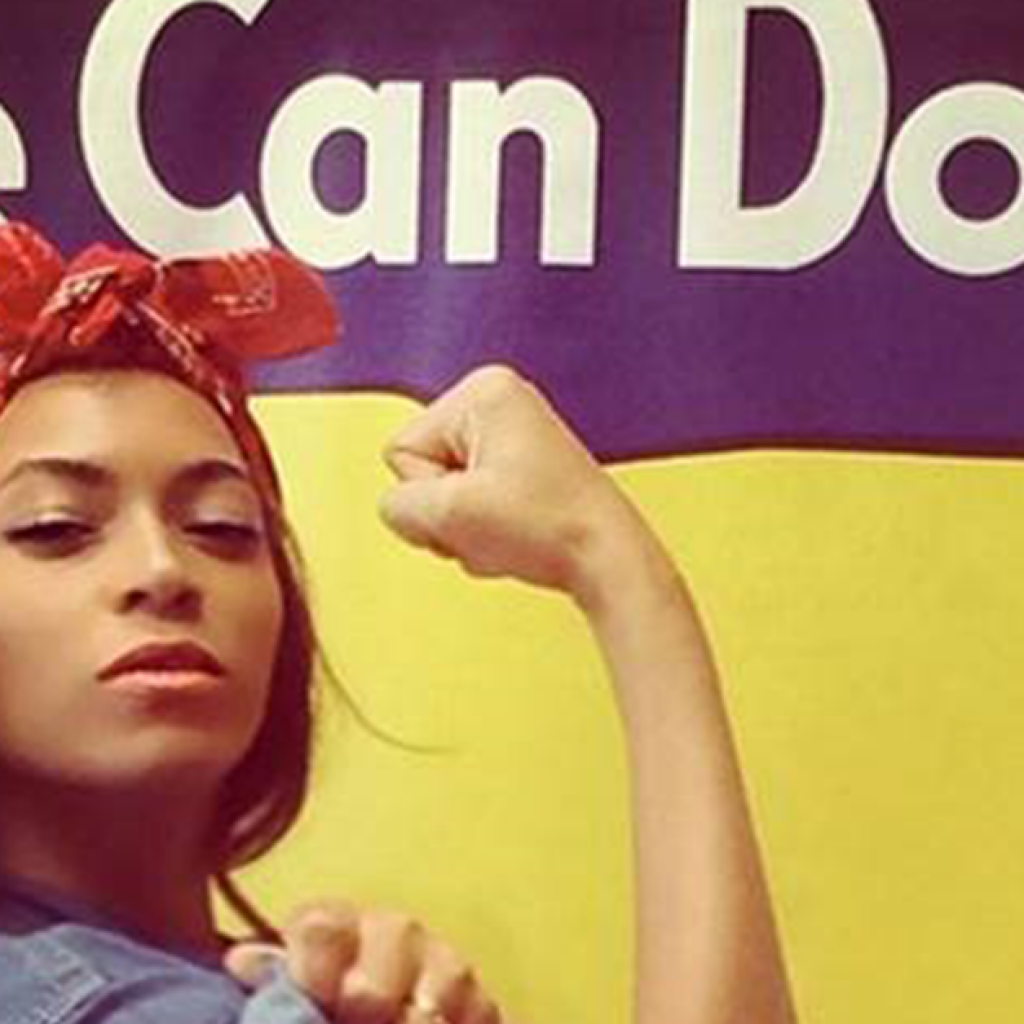
What does intersectional feminism actually mean?
Sign art by Julie Devine, Photography by Marc Nozell via Flickr

You may have heard the phrases ‘intersectionality’ or ‘intersectional feminism’ cropping up more and more lately. Intersectionality has recently taken on more space in public discussions about feminism, but it’s not new – even if it only made its debut in the Merriam-Webster dictionary in 2017.
It defines intersectionality as “the complex, cumulative manner in which the effects of different forms of discrimination combine, overlap, or intersect”. Put simply, it means that different forms of discrimination don’t exist in a vacuum – for those who embody different marginalised identities, these often overlap and amplify each other to create a unique experience of discrimination that is more than just the sum of its parts.
It’s a critical concept, but one that can sometimes be hard to wrap your head around – particularly when we consider that the term can mean different things to different people across different contexts.
So today, we’re breaking down where it all began, how it’s used today, and why it matters to our work.
The history
The word itself was first used by scholar and civil rights advocate Kimberlé Crenshaw in 1989. While still a law student interested in critical race theory, Crenshaw started questioning the way the law treated cases that centred issues of sexism and racism. To Crenshaw, studying them in isolation of each other was a significant conceptual limitation of the courts and ignored a very simple fact of life – that black women were both black and women and, therefore, subject to discrimination on the basis of both their race and gender.
One of the cases Crenshaw turned to to illustrate this point was the 1976 case of Degraffenreid v General Motors. The case centred around five black women suing General Motors for a policy that they viewed as discriminately targeting Black women. Essentially, the women argued they were faced with the double discrimination of being both black and female, but the legal system refused to recognise this.
To Crenshaw, “intersectionality was a prism to bring to light dynamics within discrimination law that weren’t being appreciated by the court.”
“Courts seem to think that race discrimination was what happened to all black people across gender and sex discrimination was what happened to all women, and if that is your framework, of course, what happens to black women and other women of colour is going to be difficult to see.” – Kimberlé Crenshaw
Intersectionality today
Intersectionality today
Despite coining the term, Crenshaw is the first to admit that she’s not the first to articulate its true meaning, citing women like 19th century Black Liberation Activist Anna J. Cooper all the way through to living legend and prominent political activist, philosopher and author Angela Davis.
As Crenshaw built on these foundations, modern feminists build on hers – today, intersectionality encompasses more than just the intersections of race and gender. It’s now widely used to illustrate the interplay between any kind of discrimination, whether it’s based on gender, race, age, class, socioeconomic status, physical or mental ability, sexual identity, religion, or ethnicity.
Why it matters to our work
The purpose of intersectional feminism is to recognise how different aspects of a person’s identity might interact to change the way they experience the world – and the barriers they might face as a result.
It allows us to view the world outside of our own experience and better understand how different forms of marginalisation can deepen and amplify each other to create unique vulnerabilities, ones that cannot be addressed through one-size-fits-all solutions. Recognising this can allow us to be more critical of how we view the systems of power we are trying to change and be more targeted in the ways we seek to further gender equality.
This understanding of the world is central to the work of our partners and influences the way they address the issues impacting the communities they serve:
- Women and girls were disproportionally impacted by the COVID-19 pandemic, and this was particularly true for young women in Asia and the Pacific. IWDA worked with young women leaders in Cambodia, Myanmar, Papua New Guinea, Fiji and Samoa to highlight their stories of marginalisation and leadership during the pandemic.
- In Timor-Leste, class and socioeconomic discrimination intersect with sexism, making it hard for poor women to get elected because of the high cost of campaigning in the newly democratised nation.
- Research IWDA has contributed to in Cambodia shows that women with disabilities are more likely to face violence from immediate family members, and more likely to experience controlling behaviour from partners.
Intersectionality is a broad concept, and it’s still one that’s hotly debated in the feminist community. We don’t claim to be authorities on anyone else’s feminism, but to us, acknowledging how different forms of discrimination intersect with and amplify gender-based discrimination is a critical way to ensure all women, trans, intersex and non-binary people reap the benefits of advancing gender equality for all.
Want to know more?
Sign up to our mailing list, check out our recommended reads, and watch our latest short animation: A Feminist Future.



